Visiting Brussels is more than just the opportunity to drink a delicious beer or eat the most impressive tasting chocolate in Europe. This is not only the capital of Belgium, but also more than just a grey and rainy city. It is a city that concentrates the charm of a peaceful place that opened the doors to modernity, but refuses to give in completely to it. In this tourist map we will tell you what to visit in this city where you will find the old Flanders evoked in history and literature books, a contrast between the classic and the sophistication.
Tourist map of Brussels
Contents
The tourist city of Brussels emerged from a swamp area in the Ancient Age to become today one of the most important cities in Europe politically and culturally. Its population growth is so impressive that it is difficult to place a number on the exact extension of its territory, because it has had to expand to nearby municipalities in order to meet the population demand. Its quality of being a politically neutral city was the main condition for it to be chosen as the administrative headquarters of the European Union. Here you can see really impressive architectural jewels, with Gothic and Flemish styles, neo-baroque and art noveau. In addition, the Brussels Museums of Fine Arts are the best known in the world. There are some dedicated to modern art and others more classical. Exhibitions on local artists are frequent. One of the attractions is the Manneken Pis, which became the symbol of the city and is a bronze statue in the shape of a child urinating.
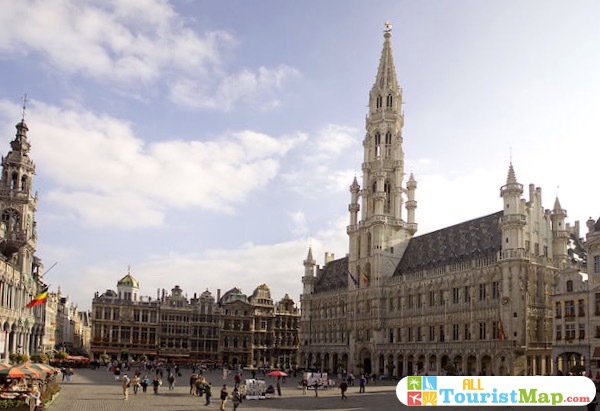
One of its main tourist attractions is a huge market of antiques and historical relics. This is a lively, multinational city, precisely because it is the administrative headquarters of the European Union such as the North Atlantic Treaty Organization (NTO) and the place where Belgium’s public authorities are concentrated. It really is a city that breathes an atmosphere of cordiality and joy and that offers a range of multiculturalism, which paints a perfect scenario of restoration, art and nightlife. It is also the place where you can see fashion in all its splendour, from galleries, designer shops, restaurants, bars and other places that are at the forefront of a city. Its climate is extremely cold in winter, when the temperature drops to seven degrees, and quite hot in summer, when the temperature can rise to 33 degrees. In addition, visitors should be warned, because the rains are constant.
Tourist guide of Brussels
Brussels is an unmissable tourist destination in Europe. This city, where two official languages, French and Dutch, are spoken, is modern but places an unparalleled value on history and art, is accessible, cosmopolitan and has a great nightlife. So, if you only think of it as the political capital of Europe, you will miss out on a visit where you can enjoy walks like the beer tour, learn about the comic book route and the close relationship that comics have with the city, or go as a family to the Mini Europe park, where there are miniature replicas of the most significant buildings in Europe. You can also go to the Atominumm monument, built in 1958, and take a funny picture of yourself trying to catch one of its huge balls. The gastronomic experience will also delight even the finest palate.
What to visit in Brussels
Grand Place

The Grand Place is the most important square and the essential place in Belgium, both for locals and visitors. This place, located in the historical centre of the city, was declared a UNESCO protected heritage site and consists of a walk where you can see beautiful buildings that are a kind of architectural jewels the houses of the guilds, the Maison des Ducs de Brabantla Maison du Roi, Le Piegeon and the Hotel de Ville. The gastronomic part is also present, as it is a tradition to sit on one of the terraces and drink a beer, as well as taste mussels and chips. As an additional fact, every two years in August the square is covered with beautiful flowers, forming a kind of mantle or carpet.
Brussels Cathedral

The Cathedral of Brussels, also known as the Cathedral of Saint Michael and Saint Gudula, is the most important religious building in the baroque style in the city. Although its construction dates back to the 18th century, it was declared a cathedral in 1961 and since then has been the scene of royal coronations, weddings and other significant Catholic events. It was recently restored and since then it is in all its splendor and looks wonderfully beautiful, inside it stands out the great organ, the pulpit carved in wood and the beautiful stained glass windows. It can be visited individually or through a tour that takes place in the city and in which the most important places of this city are visited.
The Comic Route
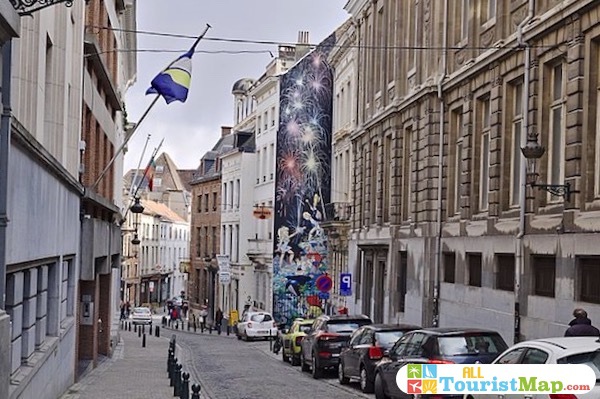
The Comic Route is one of the most famous walks in the city, both for lovers of the comic genre and for those who do not. Brussels is the birthplace of great comic artists such as Peyo, the creator of The Smurfs, and Hergé, whose hand created The Adventures of TinTin. The tour includes a visit to the Comic Museum, where you can learn more about TinTin’s father, and a walk through streets where there are murals of the most famous comics that emerged from this part of Europe, such as Asterix or the curator LuckyLuke.
The Sablon
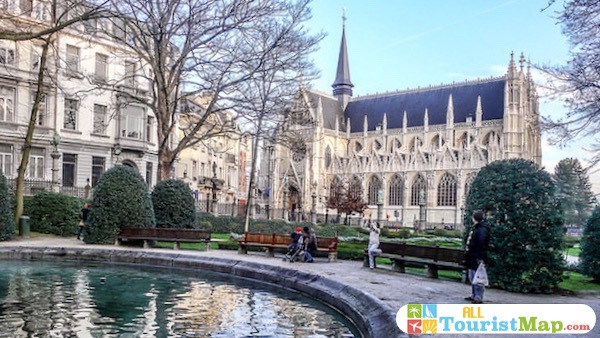
The Sablon is the most elegant district of Brussels and one of its attractions is to visit a number of establishments where you can buy beautiful objects that are antiques. But this is not the only thing you can do in the most beautiful and exclusive district of the city. Three sites mark the agenda of the tour, the first is the Cathedral of Notre Dame with its beautiful Gothic architecture, followed by the Place Du Grand Sablon and the Place Du PetitSablon, where every Sunday there are fairs. Its name, Sablon (French) or Zavel (Dutch) refers to a fine-grained sand, halfway between silt and coarser sand.
St. Hubert Galleries

The Galleries St. Hubert or Koninklijke Sint-Hubertusgalerijen in Dutch, were the first commercial galleries in Europe, built in 1948 and also became the meeting point for avant-garde artists, both from Belgium and the rest of Europe. It has a glass façade with arches separated by pilasters and two upper floors, all in an Italian Cinquecento style, under an arched glass roof with a delicate cast iron structure. Near the Grand Place, three main galleries: the King, Queen and Prince’s gallery. It is a two-hundred metre walk with vaults made of cast iron and glass. There are exclusive shops, chocolate shops, jewellery shops and places with a terrace where you can drink coffee and eat desserts.
Royal Palace and Park
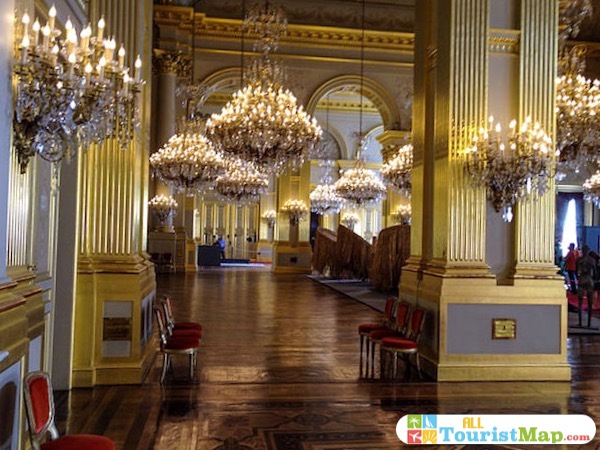
The Royal Palace and Park of Brussels is the official palace of the king, but since its construction in the eighteenth century was the residence of all the kings who ruled Belgium. Its design, both interior and exterior is pure French style and has beautiful gardens where it is a pleasure to take walks and see ponds, as well as go into the small forests. In the interior it has several rooms that have a majestic and beautiful that moves, as the white marble staircase and rooms like the Goya, the Hall of the Bulls and the Hall of Mirrors. This place is available for visitors between the months of July and September each year, from Tuesday to Sunday.
European Quarter
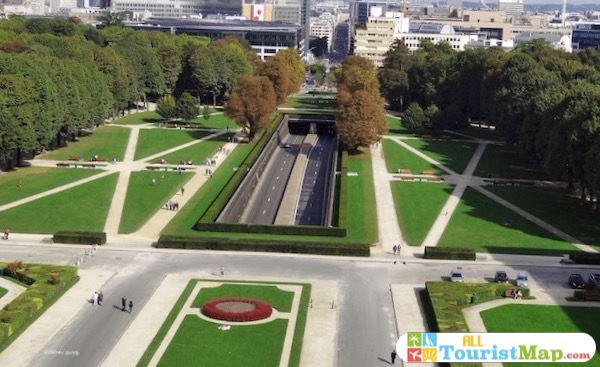
In the European Quarter, visitors can enjoy buildings that are not only iconic, but also of great political importance, since the tour includes the European Parliament and the administrative headquarters of the European Union. Although it is far from the city center, it is easily accessible through the Metro system. During the tour you can visit the JustusLipsius, which is the headquarters of the Council of the European Union and the Belayrmont, the building where the official headquarters of the European Commission are located. You can also walk through Leopold Park and the Cinquantenaire Palace. Visitors can also see a large section of the Berlin Wall.
Basilica of the Sacred Heart of Jesus
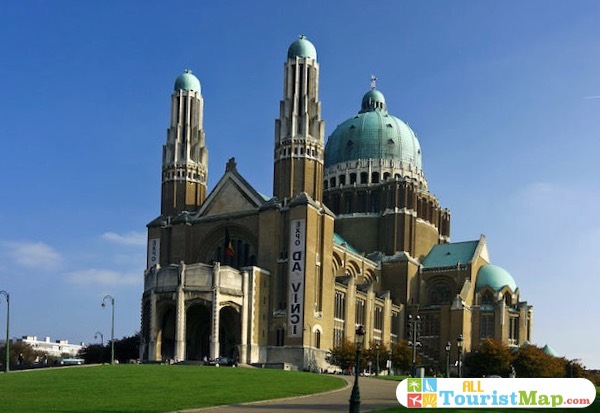
The Basilica of the Sacred Heart of Jesus in Brussels is an unrivalled architectural piece, a must-see when in town. It is an Art Deco style building, 89 metres high and 169 metres wide, measures that make it the largest religious temple in the world. Its construction dates from 1907, during the rule of King Leopold. Within its structure, two large circular towers and a green dome stand out, as well as a terrace where one of the best panoramic views of the city can be observed. Inside, the greatest visual attraction is the beautiful stained glass windows.
Manneken Pis
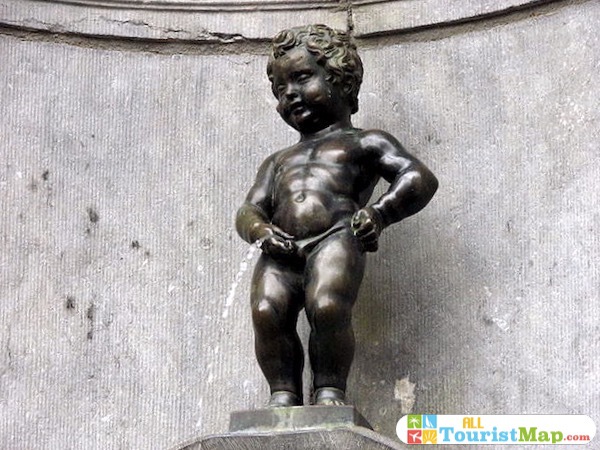
The Manneken Pis is a bronze statue of a child urinating, created in 1619. The statue is located near the Grand Palace, one of the most important urban centres in Brussels and receives a large number of visitors every day, from people eager to have their picture taken from every angle with the unique statue. The Manneken Pis has an impressive wardrobe, this icon has about eight hundred costumes, which are placed according to the festivity and time of year and the fountain that simulates the piss is often filled with beer. One of the recommendations is to go early in the morning, when there are the fewest visitors in the place. Otherwise, the waiting time to access the statue can be long and visitors must be patient. Another site of similar interest is the Jeanneke Pis, the female version of the statue, which is located in an alleyway near the Grand Palace.
Atomium

The Atomium is one of the iconic monuments of Brussels. Its shape is that of an atom enlarged 165 million times and is one hundred metres high. It was built in iron in 1958 to symbolise the Brussels World’s Fair. At that time it was a questionable work of art, but today it is a reference point in the city. One of the most fascinating experiences is eating in a restaurant that was placed inside one of the balls covered with stainless steel. From there you can also appreciate one of the most beautiful views of Brussels.
Brussels Hotel Map
One of the advantages that Brussels offers to its visitors is that, while it is known to be the capital of Europe, accommodation costs are not as expensive as you might think. The city offers accommodation services at good prices and there are also alternatives such as temporary rental apartments with all the services, which helps to lower costs when preparing food within these premises. One of the most accurate recommendations is to look for lodging near the neuralgic area of the city, that is, near the Grand Palace or, failing that, look for hotels or inns where there are subway stations within a short distance. The Hotel La Madeleine is one of the most recommended since it is in the center of the city, five minutes walking to reach the Manneken Pis. It offers breakfast services, satellite TV and wifi, as well as comfortable rooms with private bathrooms. The costs are accessible.
